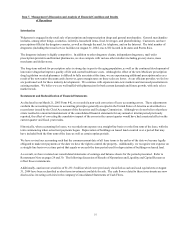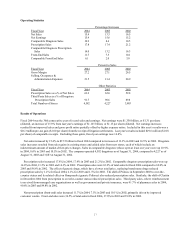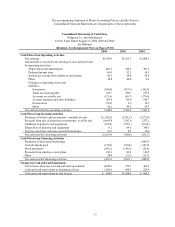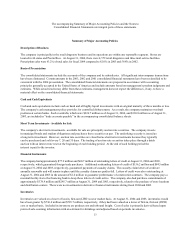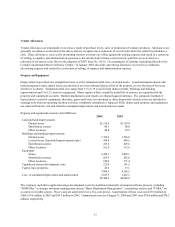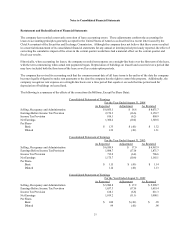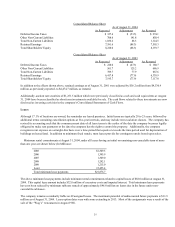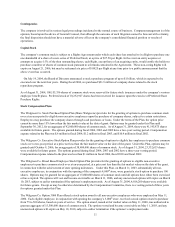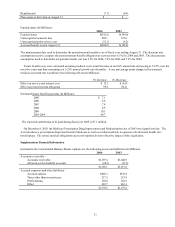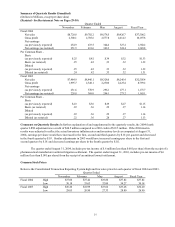Walgreens 2004 Annual Report Download - page 26
Download and view the complete annual report
Please find page 26 of the 2004 Walgreens annual report below. You can navigate through the pages in the report by either clicking on the pages listed below, or by using the keyword search tool below to find specific information within the annual report. 26
Vendor Allowances
Vendor allowances are principally received as a result of purchase levels, sales or promotion of vendors' products. Allowances are
generally recorded as a reduction of inventory and are recognized as a reduction of cost of sales when the related merchandise is
sold. Those allowances received for promoting vendors’ products are offset against advertising expense and result in a reduction
of selling, occupancy and administration expenses to the extent of advertising costs incurred, with the excess treated as a
reduction of inventory costs. Prior to the adoption of EITF Issue No. 02-16, “Accounting by a Customer (including a Reseller) for
Certain Consideration Received from a Vendor,” in January 2003, the entire advertising allowance received was credited to
advertising expense and resulted in a reduction of selling, occupancy and administration expense.
Property and Equipment
Depreciation is provided on a straight-line basis over the estimated useful lives of owned assets. Leasehold improvements and
leased properties under capital leases are amortized over the estimated physical life of the property or over the term of the lease,
whichever is shorter. Estimated useful lives range from 12½ to 39 years for land improvements, buildings and building
improvements and 5 to 12½ years for equipment. Major repairs, which extend the useful life of an asset, are capitalized in the
property and equipment accounts. Routine maintenance and repairs are charged against earnings. The composite method of
depreciation is used for equipment; therefore, gains and losses on retirement or other disposition of such assets are included in
earnings only when an operating location is closed, completely remodeled or impaired. Fully depreciated property and equipment
are removed from the cost and related accumulated depreciation and amortization accounts.
Property and equipment consists of (In Millions):
2004 2003
Land and land improvements
Owned stores $1,215.6
$1,129.4
Dis tribution centers 80.1
60.8
Other locations 40.8
29.5
Buildings and building improvements
Owned stores 1,322.4
1,226.0
Leased stores (leasehold improvements only) 478.4
440.5
Distribution centers 415.6
429.6
Other locations 162.8
112.6
Equipment
Stores 2,438.1
2,065.1
Distribution centers 623.9
582.8
Other locations 150.0
171.4
Capitalized system development costs 123.0
101.5
Capital lease properties 43.6
13.1
7,094.3
6,362.3
Less: accumulated depreciation and amortization 1,647.9
1,422.3
$5,446.4
$4,940.0
The company capitalizes application stage development costs for significant internally developed software projects, including
“SIMS Plus,” a strategic inventory management system, “Basic Department Management,” a marketing system, and "PARS," an
accounts receivable system. These costs are amortized over a five-year period. Amortization of these costs was $19.0 million in
2004, $19.4 million in 2003 and $19.5 million in 2002. Unamortized costs as of August 31, 2004 and 20
03, were $76.6 million and $74.2
million, respectively.


